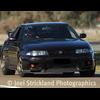Skyline Engine Spec's
Announcements
-
Similar Content
-
Latest Posts
-
1.5mm alloy folded up, it will need a tweek, as the angled bend only got to around 45° as that was the max that the break press would get with the other bends, and I needed a fair bit more, but and the alloy is easy to bend too my will by hand once I trim the lower section out I'll Dremel out and form the angle and mounting point on the lower section when time permits As for the lid, I'm looking at going a "cap", instead of a flat lid to hide the fixtures a bit
-
By No Crust Racing · Posted
I got sick of thinking about batteries so just kept buying chargers. I've got a ctek (racecar), a "noco" thing from supercheap (tow car with 2 batteries), and an old "SupaCharge" branded lead acid thing (farm ute/mower) and will need 1 more when the Silvia gets a battery again (if the 86 stays). I always make sure the charger itself is in free space/away from car etc, just to be sure. -
The "long nose" diffs in your type of car, that have the speed sensor on the snout, are a pain because the casing is different from all the other short nose diffs. This means that the pinion shaft inside them is longer, which can make it harder to do certain types of diff swaps. But, if all you are going to do it swap the diff centre, and keep the gears (that's the crownwheel and pinion gears) then you won't have any problems.
-
Ok nice. And just one question. If i just change the inside of a diff to some type of LSD but the whole box/shell remain the same...it would still work? Or that inside/lsd gears would trhow of the signal?
-







Recommended Posts
Create an account or sign in to comment
You need to be a member in order to leave a comment
Create an account
Sign up for a new account in our community. It's easy!
Register a new accountSign in
Already have an account? Sign in here.
Sign In Now